4 Swaps for Disease-Prone Red-Tip Photinias
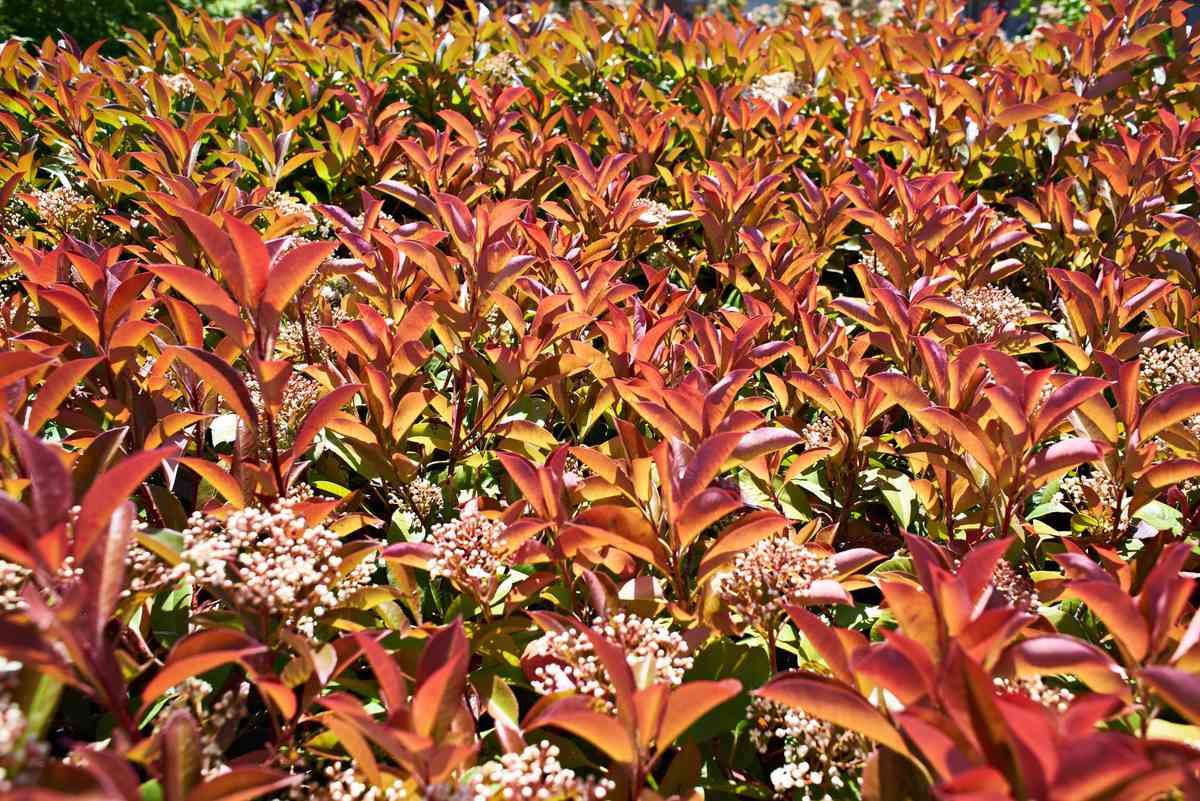
sergeyryzhov/Getty Images
If you've struggled with red-tip photinias in your garden, you're not alone. One season they look fine with their signature red-tipped leaves. The next year, after pruning, they look diseased with leaves covered with spots and holes, and few healthy ones. Now what? Can the shrub be saved with fungicide or fertilizer, or should you replace it?
Here's why red-tip photinias struggle in the South and what to plant instead.
Why Red-Tip Photinias Die in the South
Red-tip photinias (Photinia x fraseri) planted in the rainy, humid climate of the Southeast are subject to a virulent disease called Entomosporium leaf spot. The leaf spot attacks only new, bright red leaves and spreads from leaf to leaf by splashing water. Small red spots appear that grow larger and coalesce. They develop silvery or tan centers with dark purple borders (pictured below).
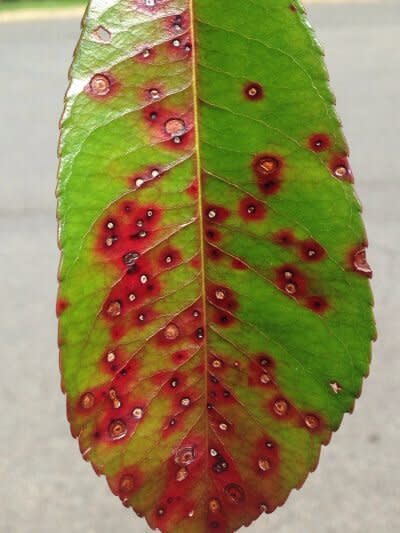
emPhotinia leaf spot. Photo: agextension.org/em
The more you trim these shrubs, the more red leaves you get, and the more disease too. Eventually, diseased leaves drop, branches die back, and the whole shrub dies. You can control leaf spot by spraying the new foliage according to label directions with Immunox or Daconil, but replacing them with a shrub that's easy to grow in Southern climates may result in less maintenance and more enjoyment in the long run.
Red-Tip Photinias Do Well in Arid Climates
Those in southern California, west Texas, and places with similar arid climates will undoubtedly be happy to know that this disease is a not a big problem there. But if you live anywhere that receives more than 35 inches of rain a year, don't plant red-tips, and if you have one that's dying, here's four shrubs we recommend planting in their place.
Four Shrubs That Can Replace Red-Tip Photinias
Holly
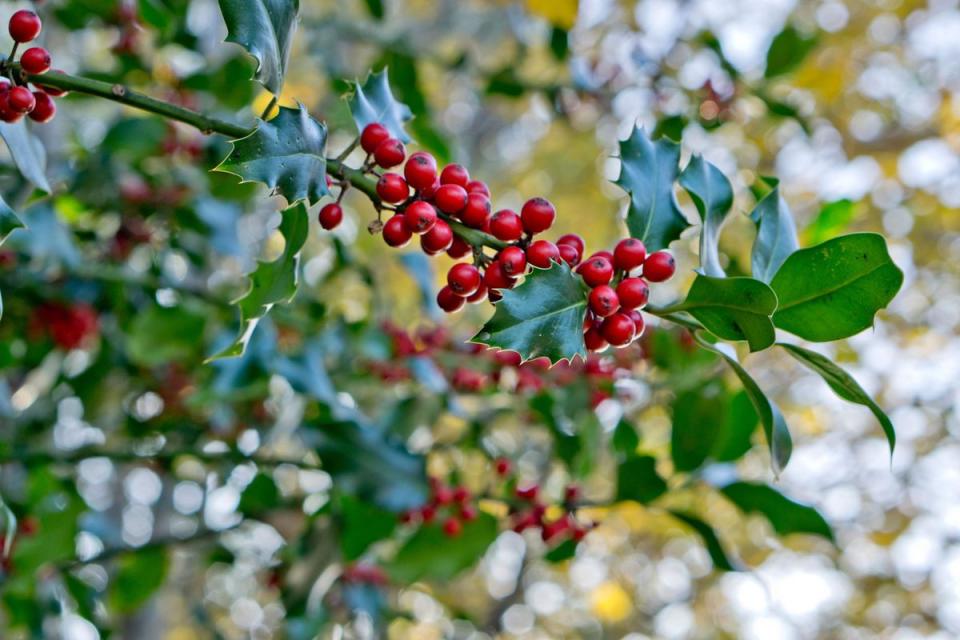
Getty/Kazam Jan / EyeEm
Versatile and dependable holly (Ilex) is always a popular choice in Southern gardens. Depending on what you need, there's likely a holly that's just right for you as there are more than 400 species and numerous hybrids to choose from.
Holly can be low, mounding shrubs, like 'Low Rider,' trees that grow more than 40-feet tall, and everything in between. Leaves come in a variety of colors and shapes, from brilliant gold 'Touch of Gold' to variegated 'Golden Oakland' to classic, dark-green, spiky leaves with 'Robin,' 'Oakland,' or 'Christmas Jewel'—all from the Southern Living Plant Collection.
Evergreen versions offer year-round color, while deciduous hollies, like winterberry, drop their leaves but still dazzle with bright red (or orange, pink, or gold) berries in the cold-season.
Most hollies are male or female—for the female plants to produce signature red berries, both sexes need to be present.
Sasanqua Camellia
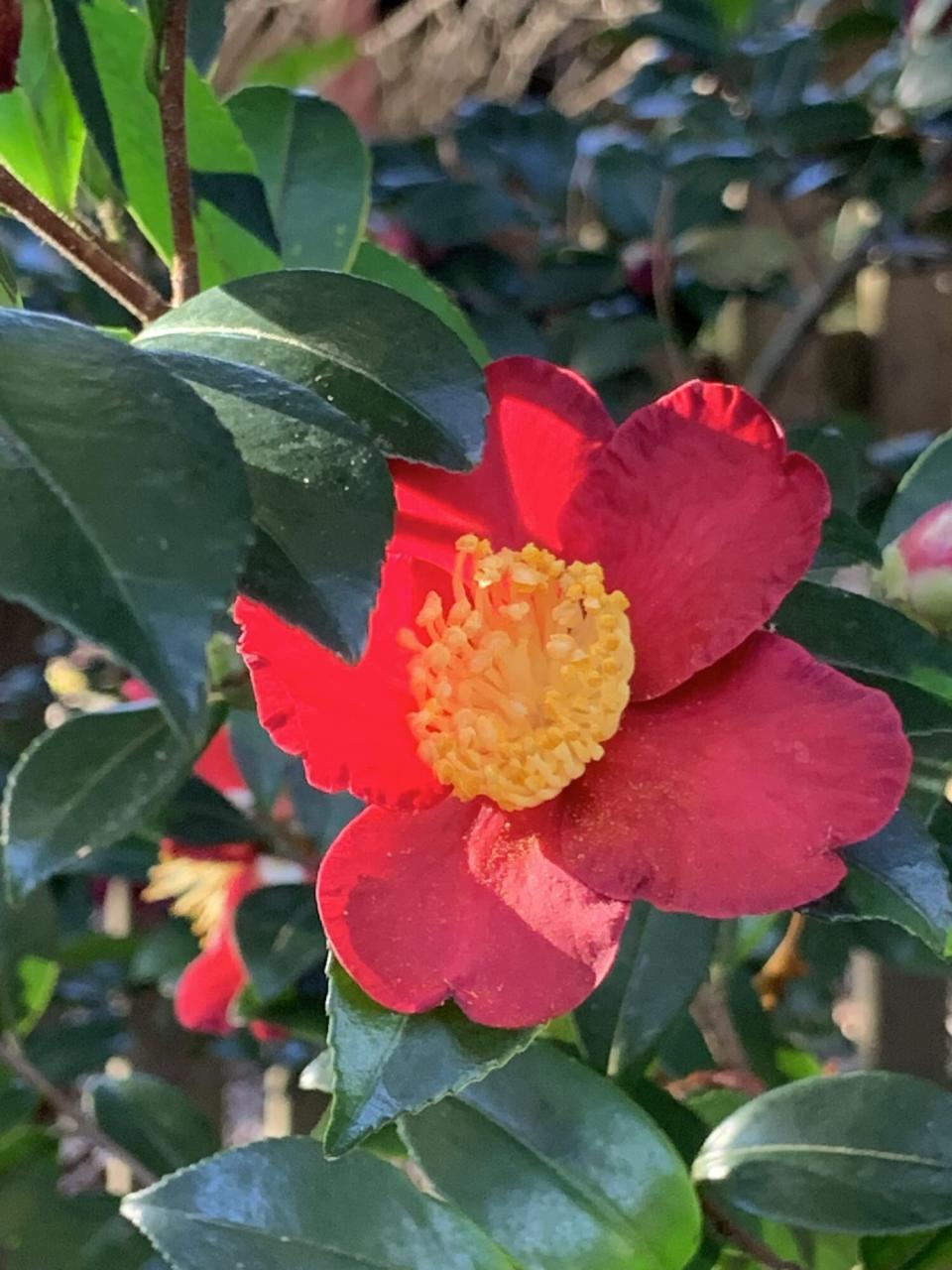
Steve Bender
Another classic, sasanqua camellias (Camellia sasanqua) are fall-blooming, flowering, evergreen shrubs that grow beautifully in Southern gardens. Sasanquas are more compact than common camellias, reaching about 10- to 12-feet tall and wide at maturity, says the Grumpy Gardener.
"They love summer heat and can take full sun or light shade. Give them moist, acid, well-drained soil that contains plenty of organic matter," says the Grumpy Gardner.
Selections include the 'October Magic' series in a variety of colors, early-fall bloomer 'Pink Stella,' and festive, winter-bloomer 'Yuletide.'
Sasanquas are not suited for the Tropical South, and in the Upper South, they need some sheltering from the cold—there are now camellia hybrids adapted to these areas that may work better.
Holly Osmanthus
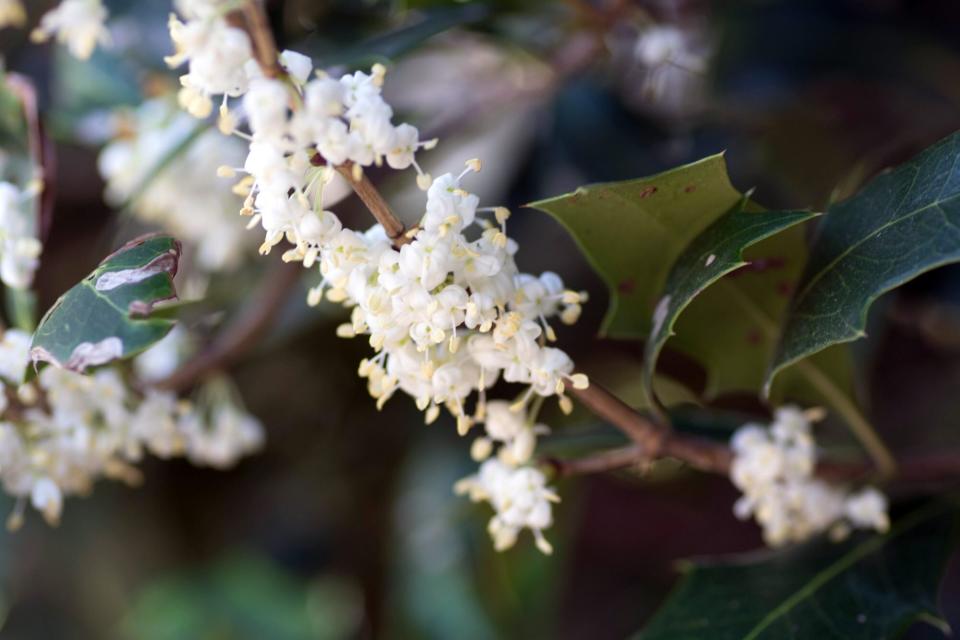
Getty Images
Holly osmanthus (Osmanthus heterophyllus) also known as false holly is an evergreen shrub with fragrant white flowers, blue-black berries, and spiky leaves. It is easy to grow, tolerating many soils, heavy pruning, and little moisture or regular garden watering, according to The New Southern Living Garden Book. It is used as a hedge, tall screen, or foundation planting.
Selections include variegated 'Gishiki;' popular 'Gulftide,' a more cold-hardy shrub with deep-green glossy foliage; 'Purpureus' has purplish green leaves; 'Rotundifolius' has rounded leaves; and 'Variegatus' has white-edged leaves but is less cold tolerant than others.
Japanese Cleyera
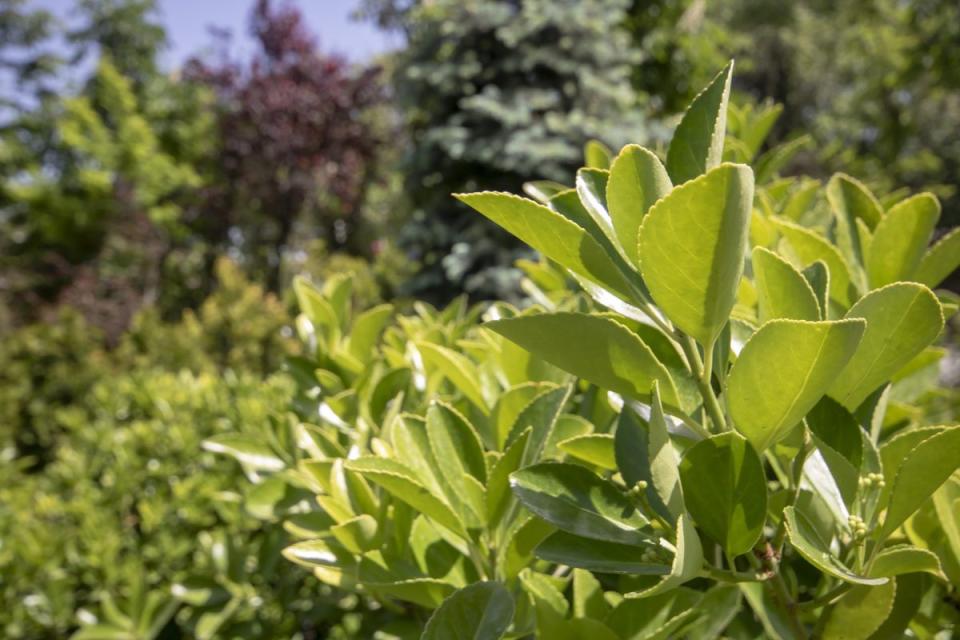
Getty Images
If you like the look of red-tip photinias—where red new growth contrasts with a green base of leaves—Japanese cleyera (Pentaphylaceae) has a similar effect. Cleyera is an evergreen shrub that "produces small clusters of fragrant, creamy-white flowers in summer, followed by small, puffy dark red berries that last throughout winter," describes The New Southern Living Garden Book.
Cleyeras grow in full sun to part shade, they are pest and disease resistant, and heat tolerant.
Cleyera comes in a variety of sizes and colors. Selections with red tones include 'LeAnn' with maroon fall foliage, 'Bronze Beauty' with bronze new foliage, and 'Montague' with bronze and maroon new growth—all from the Southern Living Plant Collection
How to Choose the Right Shrubs
Whatever the red-tip photinias get swapped out with, look for shrubs that will work well in your landscape and avoid invasive, disease-prone, or foul-smelling plants at the nursery that may cause even more headaches.

